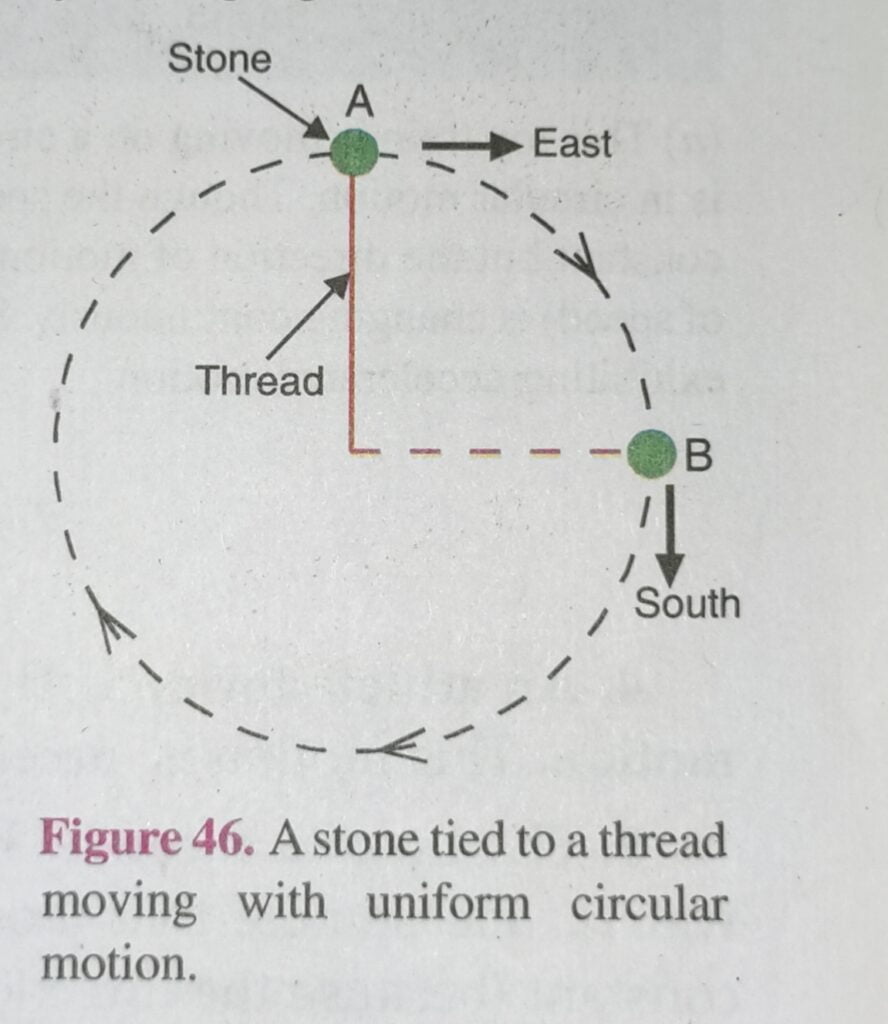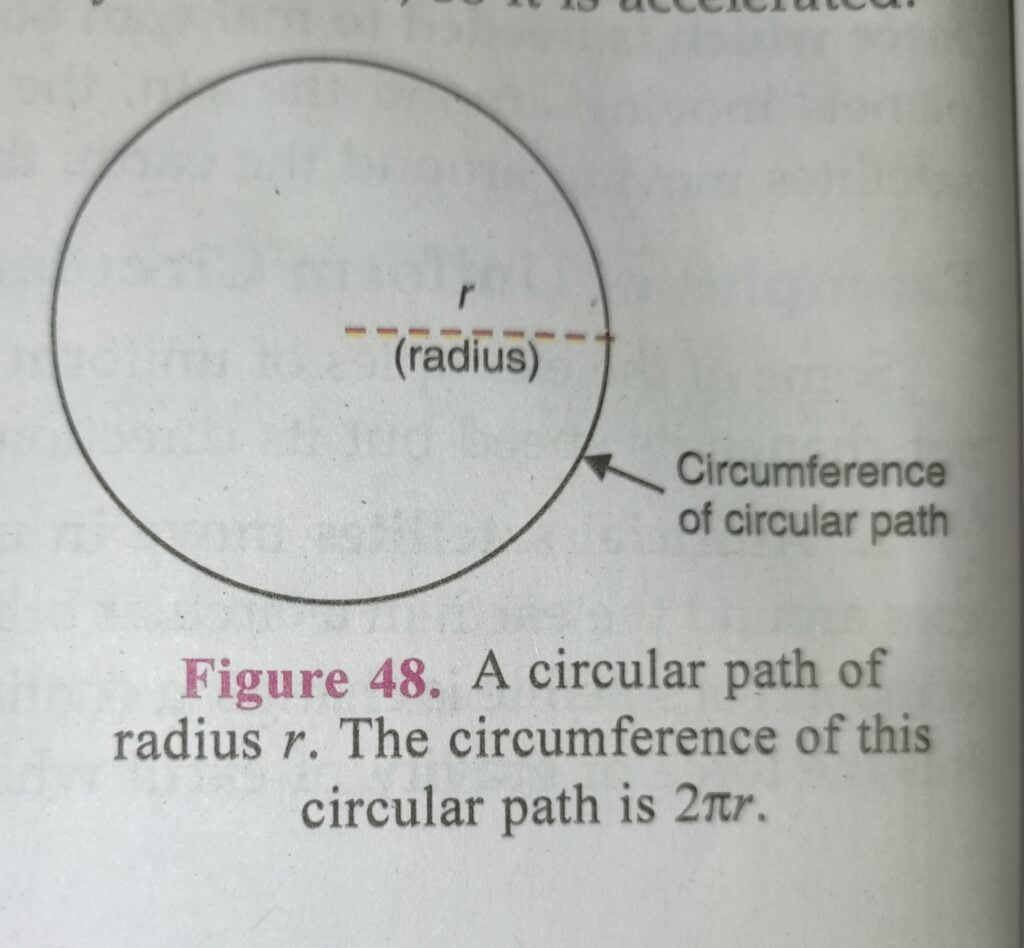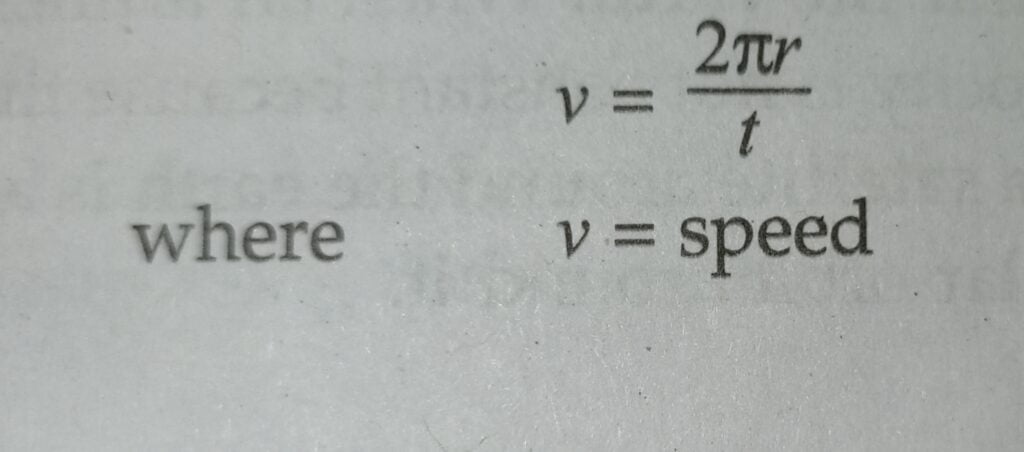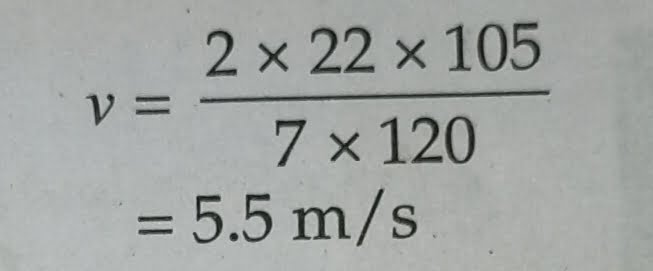When a body (or an object) moves in a circle, it is called circular motion. In other words, motion in a circle is circular motion. Before we study the uniform circular motion, we will discuss how a circular path


can be considered to be made up of an indefinite number of tiny sides, and a body moving along circular path changes its direction of motion continuously. Suppose an athlete is running along a square track [see Figure 45(a)]. While running along the square track having four sides, the athlete has to change his direction of motion four times (at the four corners of the square track : A, B, C and D). Next, suppose the athlete runs along a hexagonal track [see Figure 45(b)]. While running along the hexagonal track having six sides, the athlete has to change his direction of motion

Six times (at the six corners of the hexagonal track: A. B. C. D. E and F). Again, suppose the athlete how runs along an octagonal track [see Figure 45(c)]. While running along the octagonal track having eight sides, the athlete has to change his direction of motion eight times (at the eight corners of the octagonal track : A, B, C, D, E, F, G and H). Thus, as the number of sides of a track increases, the direction of an athelete running along it changes more and more frequently. Now, if the track has an indefinite number of tiny sides (or point sides), then the shape of track becomes a circle or it becomes a circular track [see Figure 45(d)]. And when the athlete runs along a circular track, then his direction of motion changes continuously. In general we can say that : When a body (or object) moves along a circular path, then its direction of motion (or direction of speed) keeps changing continuously. So, if an athlete moves with a constant speed along a circular path, then the velocity of the athlete will not be constant because velocity is the speed in a specified direction and here the direction of speed changes continuously. Since the velocity changes (due to continuous change in direction), therefore, the motion along a circular path is said to be accelerated. Keeping this point in mind, we will now define uniform circular motion.
When a body moves in a circular path with uniform speed (constant speed), its motion is called uniform circular motion. It is possible for a body to move in a circular path with uniform speed as long as it is travelling equal distances in equal intervals of time. But the velocity of the body moving in a circle with uniform speed is not uniform because the direction of motion is constantly changing. Let us take one example to make this point more clear.
Suppose a stone tied to a thread is rotated in a circular path with uniform speed in clockwise direction as shown in Figure 46. Now, when the stone is at point A, then its speed is directed towards east (along the tangent to the circle at A). And if the stone is released when it is at A, it will fly off in the east direction. When the stone is at point B, its speed is directed towards south (along the tangent to the circle at point B). And if the stone is released when it is at point B, it will fly off in the south direction. This means that when a body moves in a circular path, the direction of speed is not the same any two points. Since there is a change in the direction of speed of the body, its velocity is not uniform (because velocity is the speed in a specified direction). It is clear that when a body moves in a circle with uniform speed, its velocity changes continuously, so that the motion in a circle is accelerated. In other words, circular motion is accelerated even though the speed of the body remains constant. Thus, the motion in a circle with constant speed is an example of accelerated motion. Though tne speed may not change, the direction of motion changes continuously.

Please pote that a force is needed to produce circular motion. In other words, a force is needed to make a body move in a circle. Now, when a stone tied to a thread is rotated by a povcen in a circular path, then the pull of thread is the force which makes the stone move in a circle (This pull is provided by the hand of the person who is holding the thread). The force vihich is needed to make an object travel in a circular path is called centripetal force. In the case of planets moving around the sun, the centripetal force is the gravitational pull of sun, and in the case of Satellites moving around the earth, the centripetal force is the force of gravity of earth.
Examples of Uniform Circular Motion
Some of the examples of uniform circular motion are given below. In all these examples, an object does not change its speed but its direction of motion changes continuously.
1. Artificial satellites move in uniform circular motion around the earth. When an artificial satellite goes around the earth in a circular orbit with constant speed, its velocity is not constant because the direction of motion of satellite is changing continuously. Thus, the motion of a satellite around the earth is accelerated. It is the force of gravity of earth which keeps the satellite in circular orbit around it.
2. The moon is a natural satellite of the earth. The moon moves in uniform circular motion around the earth. So, the motion of moon around the earth is accelerated. It is the force of gravity of earth which keeps the moon in circular orbit around it.
3. The earth moves around the sun in uniform circular motion. So, the motion of earth around the sun is accelerated. It is the gravitational force of the sun which keeps the earth moving in a circular orbit around it.

4. An athlete (or cyclist) moving on a circular track with a constant speed exhibits uniform circular motion. This motion is accelerated because of a continuous change in direction of motion.
5. The tip of a seconds’ hand of a watch exhibits uniform circular motion on the circular dial of the watch. Please note that though the speed of the tip of seconds’ hand is constant but its velocity is not constant (because the direction of motion of tip of seconds’ hand changes continuously). Thus, the motion of the tip of seconds’ hand of a watch is accelerated. We have already studied uniform linear motion. So, let us see what is the main difference between uniform linear motion and uniform circular motion : In uniform linear motion, the direction of motion is fixed. So, uniform linear motion is not accelerated. In uniform circular motion, the direction of motion changes continuously. So, uniform circular motion is accelerated. Thus, an important characteristic of circular motion is that the direction of motion in it changes continuously with time, so it is accelerated.
To Calculate the Speed of a Body in Uniform Circular Motion
When a body takes one round of a circular path, then it travels a distance equal to its ‘circumference’ which is given by 2tr, where r is the radius of the circular path (see Figure 48). The speed of a body (or object) moving along a circular path is given by the formula :



We will use this formula to solve a numerical problem now.
Sample Problem. A cyclist goes around a circular track once every 2 minutes. If the radius of the circular track is 105 metres, calculate his speed. (Given π= 22 / 7 )
Solution. We know that for a body moving in a circular path:

Radius of circular track, r = 105 m
And, Time taken for 1 round, t = 2 minutes
= 2 x 60 seconds
= 120 s
Now, putting these values of π , r and t in the above formula, we get :

Thus, the speed of cyclist on the circular track is 5.5 metres We are now in a position to answer the following questions and problems : per second.
uniform circular motion examples class 9
https://brainly.in/question/23370848

